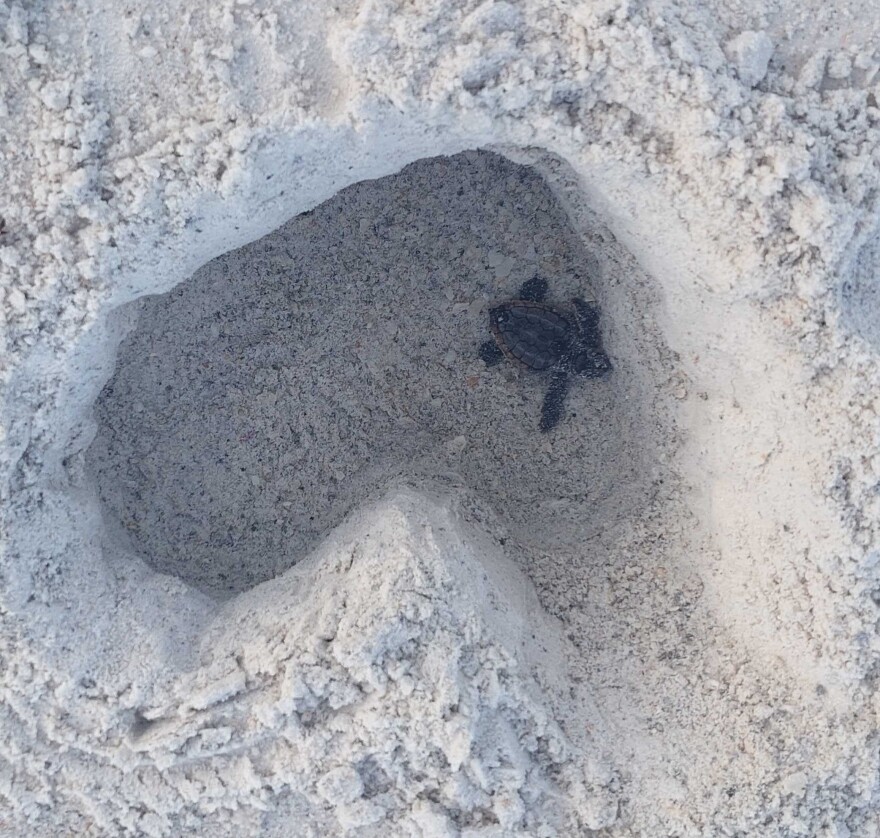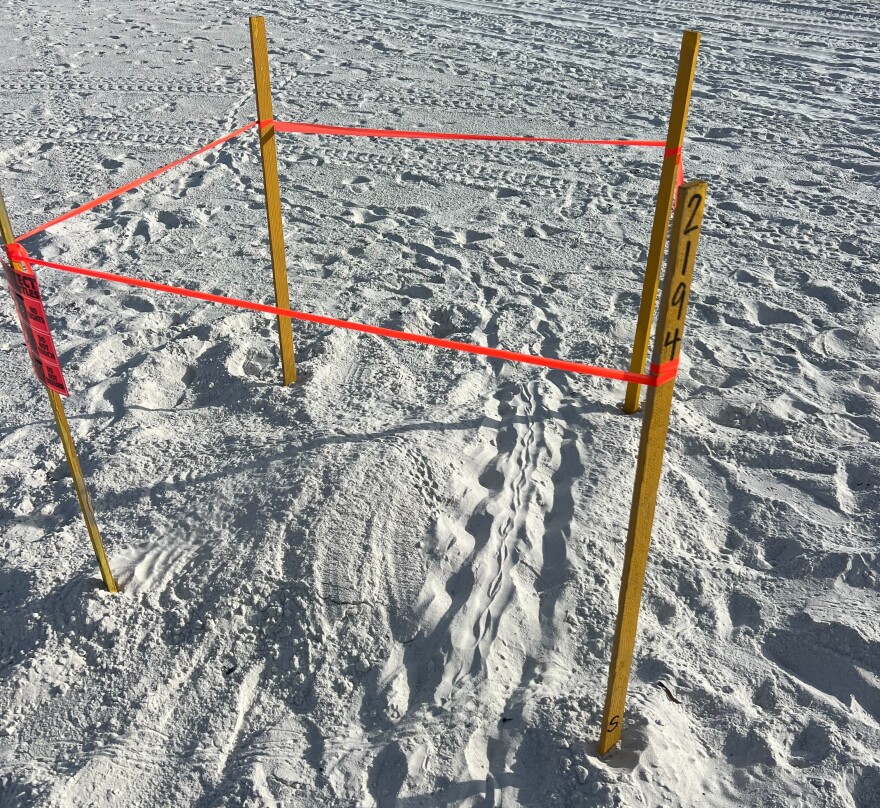The first moments of a sea turtle hatchling’s life is confusing enough as is. But this year, that dangerous trek to the Gulf might be harder for many of them.
The nesting season, which runs through Oct. 31, is happening while Pinellas County deals with fixing its hurricane-damaged beaches.
And in Manatee County, officials said the lasting effects from last year’s storms are presenting different challenges for this year’s flotilla of baby sea turtles.
But it’s not all bad news.
Kristen Mazzarella, executive director of the Anna Maria Island Turtle Watch, said she’s expecting an above-average nesting season.
She said this increase is because previous conservation efforts worked so turtles they helped in the past are finally old enough to lay eggs.
“We’re really excited about that,” Mazzarella said. “And that we do have more nesting turtles out there.”
The challenges turtles face
Pinellas will begin dropping sand as part of its beach renourishment project in September, said John Bishop, the county’s coastal construction coordinator.
But first they have to navigate the sea turtle nests sprinkled across the beaches.
Volunteers with the Clearwater Marine Aquarium can move nests laid the night before if needed.
ALSO READ: Tripping the light? Fantastic! But, there's more you can do to protect sea turtles
“The rules are we can relocate [a nest] if we will be at that part of the beach within 65 days of when it’s going to hatch,” Bishop said.
Any nests laid prior to that cannot be moved, so officials will have to wait to do construction on that area until after turtles hatch.
After the sand dunes are replenished, survey teams will go out to monitor how light might affect sea turtles.
The dunes can block some of the man-made light, but the county has to check to make sure the lights are not too bright or too visible to the hatchlings. Distracting light can lead to disorientation, something Bishop said the county has seen more of after the beaches were worn down by last year’s hurricanes.
“The lighting is probably the biggest issue we deal with in trying to keep the turtles safe,” he said.
Manatee County officials are dealing with a similar problem.

The storms decimated Manatee beaches’ dunes, destroying the sand blockade that protects new hatchlings.
While a beach renourishment project in Manatee County is not scheduled until next year, the county laid hay bales to temporarily replace the sand dunes.
Turtles build their nests away from the shoreline and on flat portions of the upper beach area. Without the dunes, that level area extends into busy roadways, dangerous rocky barriers and beachfront neighborhoods.
“This has been a challenge this year, but we're happy to see that the turtles didn't mind,” said Charlie Hunsicker, the director of the county's natural resources department. “They came back in force with nests.”
Hatchlings also get disoriented by neighborhood lights that were somewhat blocked by the sand piles.
ALSO READ: The Mote Aquarium prepares to move to new facility
Hatchlings spend the first three to six days of their lives swimming from the beach to their next rest stop, which is often a large patch of sea grass.
When they walk the wrong way, they could waste their energy swimming in a chlorinated pool.
These young turtles need to be rescued by Anna Maria Island Turtle Watch volunteers and detoxified at Mote Marine Laboratory and Aquarium before they can be carried on a boat to the nearest sargassum patch.
Mazzarella said even though the original Mote location is temporarily closed to the public, its hatchling hospital is still open.

County officials usually don’t save nests or hatchlings from natural threats, such as beach flooding and animal predators.
But the county made an exception to that this year when a rare nest popped up at Emerson Point Preserve. Officials put a chicken wire cage over that spot to protect hatchlings from the large number of people and predators in that area.
‘They’re starting to move here’
That smelly sea grass that keeps washing up on beaches — Sargassum — is a great food source for turtles in Manatee County, Hunsicker said.
He added the roughly 30 artificial reefs in the water just off Manatee and Sarasota county shores have also improved the turtle habitat in the area.
The greater Tampa Bay region typically sees loggerhead turtles nesting on its beaches, but Hunsicker said they’re on track for a record number of green sea turtle nests.
He added many of these turtles, which usually call the East Coast home, hatched on the Gulf side three to eight years ago. Now they’re coming back to lay their own nests.
“They’re starting to move here, which is a good sign in terms of water quality and food availability,” Hunsicker said. “They don’t swim 120 miles just to nest. They are building habitat and lifeways here on the Gulf Coast of Florida.”
What you can do
Hunsicker warned people to stay away from nests, adding people can face state and federal penalties for disturbing one.
He said something as simple as picking up an egg can kill the baby turtle because of the air pocket inside. If the egg is put back in the wrong orientation, the air pocket will be facing the wrong way and the turtle can’t hatch.

Beachgoers also need to fill in the holes they dig. Not only can deep holes injure other people, a baby turtle can get stuck in a shallow hole and die on its dangerous journey to the water.
People should also knock down their sand castles before they leave the beach so they aren’t in a turtle’s path.
Beachfront property owners should reduce light use in the evenings and use lighting that passes a turtle safelight test.
“The turtle-friendly lighting still needs to be shielded so you’re not seeing the actual bulb itself, you’re just seeing the light,” Bishop said. “And then the non-turtle-friendly lighting shouldn’t be on at all because it can really cause a lot of harm to the sea turtles.”
Hunsicker said residents can get a test filter that mimics the turtle’s perception of light. If the light passes through the filter, that means hatchlings can see it and could walk away from the water.
Beachfront companies often change their lightbulbs to have a more orange hue, which cannot be seen by turtles, during nesting season.
Manatee County also works with Florida Power and Light to change or manipulate streetlights to pose less of a threat to baby turtles.
“We literally, from time to time, will lay down prone on the beach and look landward to get the turtle’s perspective,” Hunsicker said.




